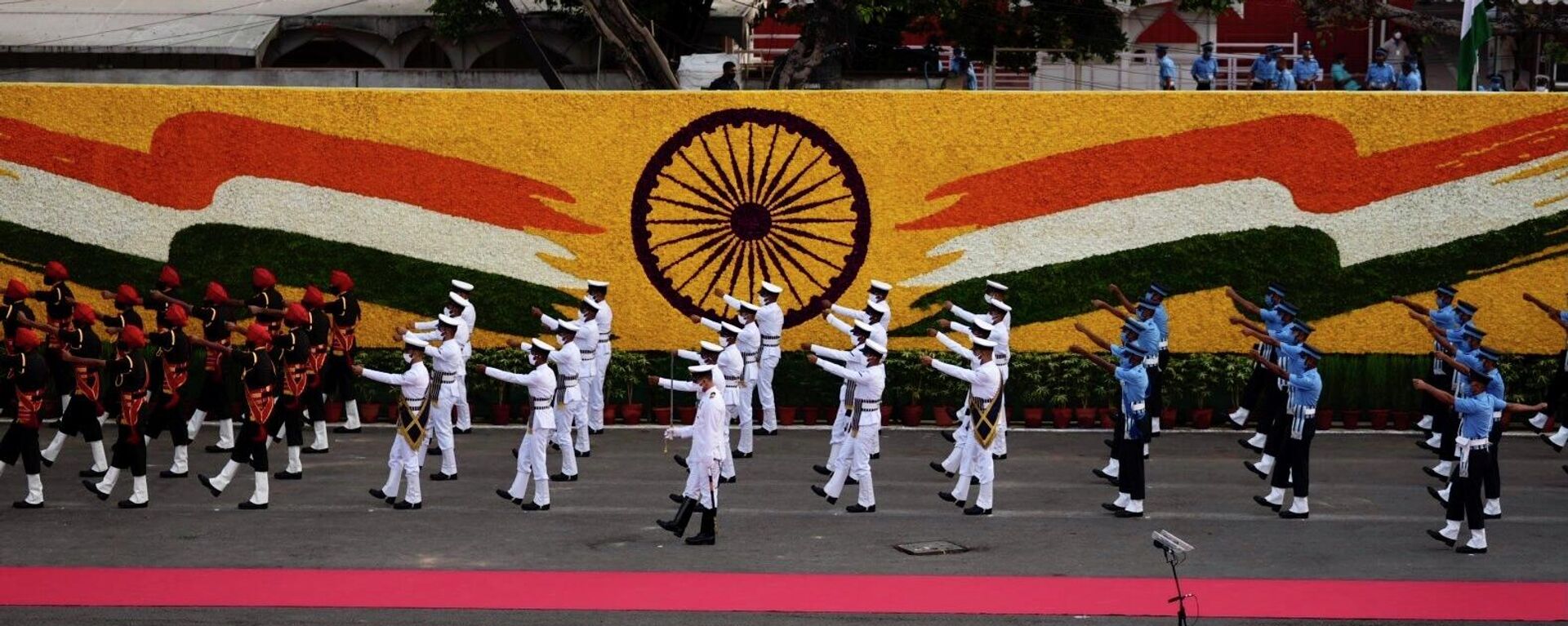https://sputnikglobe.com/20221125/top-facts-about-indias-constitution-the-worlds-longest-1104680670.html
Top Facts About India's Constitution, the World's Longest
Top Facts About India's Constitution, the World's Longest
Sputnik International
Since 2015, India has annually observed November 26 as Constitution Day. Although the document was adopted on this day in 1949, it officially took effect on... 25.11.2022, Sputnik International
2022-11-25T18:06+0000
2022-11-25T18:06+0000
2023-04-30T17:12+0000
india
constitution
https://cdn1.img.sputnikglobe.com/img/07e6/0b/19/1104693100_0:195:2949:1854_1920x0_80_0_0_4a4067b11befae6c27e2082f50aef3ba.jpg
India has the world's longest constitution, containing 395 articles in 22 parts and eight schedules.With over 165 meetings and 299 members brainstorming, it took exactly two years, 11 months, and 17 days for the constituent assembly to complete it.The Indian constitution, in detail, distributes the power between the states and the central government, underlining the ethos of India, its political code, structure, powers, duties of government institutions and its citizens, and their fundamental rights. It also distributes power without social hierarchy."For example, Late Pandit Jawaharlal Nehru, who later became India's first prime minister in 1935, demanded a Constituent Assembly to frame a constitution for free India, but it took 12 years to make it possible," Chougaonkar notes."Moreover, we can't imagine a constitution without Dr. Bheem Rao Ambedkar, who is also known as the architect of the constitution. India legally abolished untouchability in its constitution in 1950, all because of Ambedkar," he says.In comparison, racial segregation in the United States only ended legally in 1964.What to Know About the World's Longest Constitution
https://sputnikglobe.com/20220921/doing-away-with-british-legacy-indian-army-to-review-colonial-era-practices--insignia-1101045233.html
Sputnik International
feedback@sputniknews.com
+74956456601
MIA „Rosiya Segodnya“
2022
Deexa Khanduri
https://cdn1.img.sputnikglobe.com/img/07e4/0c/1e/1081607388_0:0:961:960_100x100_80_0_0_e9e931b8c1e18fb41f3074e2145d7a3a.jpg
Deexa Khanduri
https://cdn1.img.sputnikglobe.com/img/07e4/0c/1e/1081607388_0:0:961:960_100x100_80_0_0_e9e931b8c1e18fb41f3074e2145d7a3a.jpg
News
en_EN
Sputnik International
feedback@sputniknews.com
+74956456601
MIA „Rosiya Segodnya“
Sputnik International
feedback@sputniknews.com
+74956456601
MIA „Rosiya Segodnya“
Deexa Khanduri
https://cdn1.img.sputnikglobe.com/img/07e4/0c/1e/1081607388_0:0:961:960_100x100_80_0_0_e9e931b8c1e18fb41f3074e2145d7a3a.jpg
india's constitution day, 26 november, constitution day in india, world's longest constitution, which country has longest constitution
india's constitution day, 26 november, constitution day in india, world's longest constitution, which country has longest constitution
Top Facts About India's Constitution, the World's Longest
18:06 GMT 25.11.2022 (Updated: 17:12 GMT 30.04.2023) Deexa Khanduri
Sputnik correspondent
Since 2015, India has annually observed November 26 as Constitution Day. Although the document was adopted on this day in 1949, it officially took effect on January 26, 1950.
India has the world's longest constitution, containing 395 articles in 22 parts and eight schedules.
With over 165 meetings and 299 members brainstorming, it took exactly two years, 11 months, and 17 days for the constituent assembly to complete it.
The Indian constitution, in detail, distributes the power between the states and the central government, underlining the ethos of India, its political code, structure, powers, duties of government institutions and its citizens, and their fundamental rights. It also distributes power
without social hierarchy.
Explaining the importance of the Indian constitution, author and veteran journalist Sameer Chougaonkar told Sputnik that the "framing of India's constitution is not an isolated event, where a few educated men, politicians, and barristers came together one morning and decided to write a constitution." In fact, Indian freedom fighters and freedom struggles in other countries have all contributed to it.

21 September 2022, 12:55 GMT
"For example, Late Pandit Jawaharlal Nehru, who later became India's first prime minister in 1935, demanded a Constituent Assembly to frame a constitution for free India, but it took 12 years to make it possible," Chougaonkar notes.
"Moreover, we can't imagine a constitution without
Dr. Bheem Rao Ambedkar, who is also known as the architect of the constitution. India legally
abolished untouchability in its constitution in 1950, all because of Ambedkar," he says.
In comparison, racial segregation in the United States only ended legally in 1964.
"Similarly, the idea of adult franchise, every individual, irrespective of caste, creed and gender, above eighteen years can vote. Nehru and Ambedkar both [spoke out] for the adult franchise," Chougnakor explained.
What to Know About the World's Longest Constitution
Calligrapher Prem Behari Narain Raizada handwrote the 400-page constitution in both English and Hindi.
Currently, the original copies of the constitution of India are kept in special helium-filled cases in the library of the country's parliament.
The Indian constitution is also known as the "bag of borrowings." The concept of five-year plans was taken from the USSR; the concepts of Liberty, Equality, and Fraternity was taken from the French constitution; the laws on which India's top court, the Supreme Court, functions were taken from Japan.
As of October 2022, 105 amendments had been made to the Indian constitution. The first amendment was made in 1951.
The
preamble of the Indian constitution begins with "We, the People of India." This means that the people are the sovereign, and every organ of the state is ultimately accountable to them.





